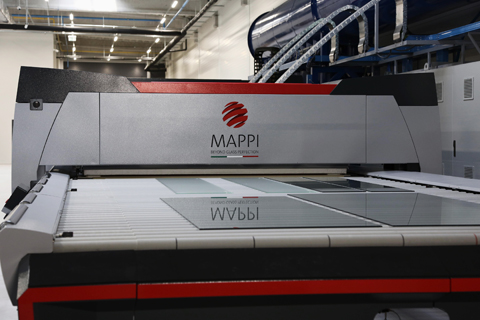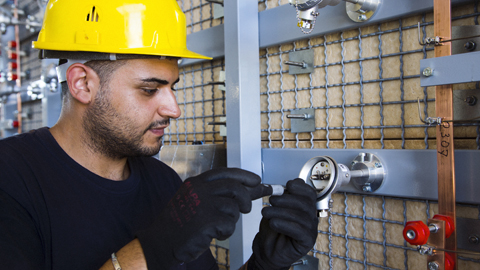The tempering furnace is the heart of the glass company production processes, it is a machine that cannot stop and, when this happens, it is a problem to be solved as quickly as possible. There are several things Mappi does to avoid any risk to our partners.
 First of all, Mappi uses the highest quality materials in the construction of their furnaces, which require minimal assistance, so they combine accuracy and experience in the construction and assembly of the machine, aware that a small imprecision, sooner or later, will lead to a malfunction and damage.
First of all, Mappi uses the highest quality materials in the construction of their furnaces, which require minimal assistance, so they combine accuracy and experience in the construction and assembly of the machine, aware that a small imprecision, sooner or later, will lead to a malfunction and damage.
The third area of intervention is periodic maintenance, a series of simple checks and interventions, based on objective indicators, which can also be carried out directly by the customer.
Of course, the unexpected is always a possibility, there may be a problem that requires the intervention of the Technical Assistance service. The first intervention is immediate, online. Through the most modern technologies the company evaluates directly what might have happened, we give advice and indications that in many cases solve the problem.
However, there are situations that require a direct intervention, on site rather than online, of the staff at Mappi is always ready to leave and reach the customers’ site in 24/48 hours.
 This is why the company has an office in Italy and one in the USA for direct assistance, and a series of authorized centres with trained technicians in different parts of the world. Mappi is always close to its partners, it is a big commitment, but Mappi wants to respect it in the best way.
This is why the company has an office in Italy and one in the USA for direct assistance, and a series of authorized centres with trained technicians in different parts of the world. Mappi is always close to its partners, it is a big commitment, but Mappi wants to respect it in the best way.
Technical Assistance can be planned and be a definite cost, rather than an unpredictable variable, by joining a Mappi Assistance Program which, for a periodic fee, guarantees a series of interventions calibrated on the type of furnace and its use.
In addition to all this, new frontiers in technical assistance are opening up thanks to the ever faster progress of technology 4.0 and systems such as Siemens Mindsphere, which equips all the new Mappi furnaces.
The doors of predictive maintenance are opened. The machine is able to collect information on its operation, it highlights the first symptoms of those that subsequently, in the absence of interventions, can become malfunctions and allow intervention in a preventive way. This avoids both downtime and the aggravation of interventions that can often be solved with a minimal expense.




